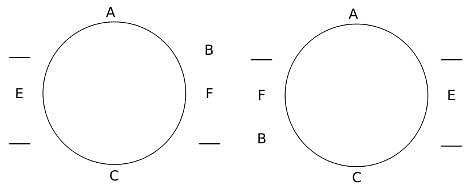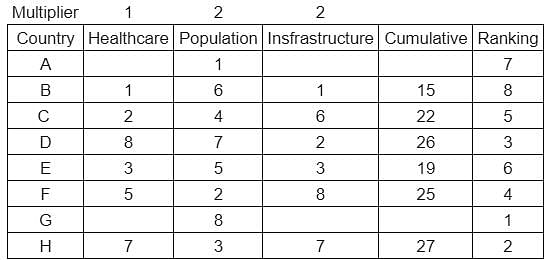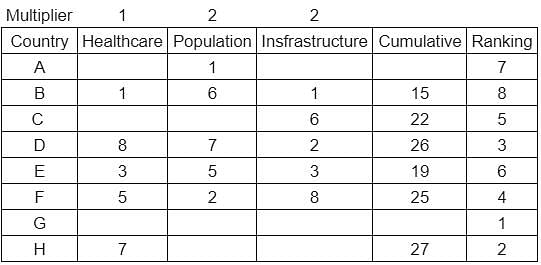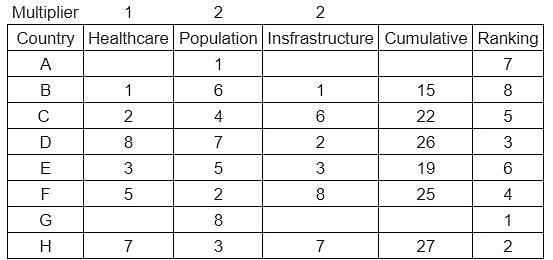CAT Mock Test- 5 (November 7) - CAT MCQ
30 Questions MCQ Test Daily Test for CAT Preparation - CAT Mock Test- 5 (November 7)
Why does the author give the examples of the Santa Susana Lab and Chernobyl?
| 1 Crore+ students have signed up on EduRev. Have you? Download the App |
What was the conclusion based on the research by the MIT ?
What is the author is trying to do by citing the example of Loretta Lynn?
Which of the following can be inferred about Asa Gray?
I: He studied at Cambridge University
II: He was a writer
III: He was an editor
IV: He was a confidant of the editors of the journal from which the article is taken
Which of the following is not an aspect of Asa Gray’s written work?
According to the passage, what were Gray’s views on Darwin?
Four sentences are given below. These sentences, when rearranged in proper order, form a logical and meaningful paragraph. Rearrange the sentences and enter the correct order as the answer.
- Wherever the rhythm was most delicate, wherever the emotion was most ecstatic, her art was the most beautiful, and yet, although she sometimes spoke to a little tune, it was never singing, as we sing to-day, never anything but speech.
- I have always known that there was something I disliked about singing, and I naturally dislike print and paper, but now at last I understand why, for I have found something better.
- A friend, who was here a few minutes ago, has sat with a beautiful stringed instrument upon her knee, her fingers passing over the strings, and has spoken to me some verses from Shelley’s Skylark and Sir Ector’s lamentation over the dead Launcelot out of the Morte d’Arthur and some of my own poems.
- I have just heard a poem spoken with so delicate a sense of its rhythm, with so perfect a respect for its meaning, that if I were a wise man and could persuade a few people to learn the art I would never open a book of verses again.
Five sentences are given below labelled as 1, 2, 3, 4 and 5. Of these, four sentences, when arranged properly, make a meaningful and coherent paragraph. Identify the odd one out.
- Even where the advancer of the art was also a psychologist, the pedagogics and the psychology ran side by side, and the former was not derived in any sense from the latter.
- To know psychology, therefore, is absolutely no guarantee that we shall be good teachers.
- The art of teaching grew up in the schoolroom, out of inventiveness and sympathetic concrete observation.
- That ingenuity in meeting and pursuing the pupil, that tact for the concrete situation, though they are the alpha and omega of the teacher's art, are things to which psychology cannot help us in the least.
- The two were congruent, but neither was subordinate.
The four sentences (labelled 1, 2, 3, and 4) below, when properly sequenced, would yield a coherent paragraph. Decide on the proper sequencing of the order of the sentences and key in the sequence of the four numbers as your answer:
1. Yet, its implications in disrupting traditional power structures are often grossly underestimated.
2. The digital revolution, much like previous revolutions, has been a source of profound economic and social transformation.
3. Historically, revolutions have redefined space for innovation and freedom, creating unforeseen opportunities for decentralization.
4. Conversely, it opens a Pandora's Box of heightened surveillance, control, and societal imbalance, overshadowing its emancipatory potential.
The four sentences (labelled 1, 2, 3, and 4) below, when properly sequenced, would yield a coherent paragraph. Decide on the proper sequencing of the order of the sentences and key in the sequence of the four numbers as your answer:
1. This shift necessitates an interrogation of traditional economic models, demanding innovative perspectives on wealth and productivity.
2. As automation and artificial intelligence take center stage, the global workforce faces unprecedented transformation.
3. Thus, nations grapple with the intricacies of integrating rapidly evolving technology into an already fragile global economy.
4. Interestingly, these advancements could herald a new era where human potential is optimized, redefining conventional work boundaries.
If the following data is additionally given, which of the following can be a possible number of people who followed all but CSK?
- Every person follows at least one club.
- No person follows exactly 2 clubs.
- The number of persons who follow all but RCB is 49.
- The number of persons who follow all but SRH is 53.
- The number of persons who follow all but KKR is 37.
- The total number of people in the sports club is 1307.
Who among the following is definitely a neighbour of A in session 1?
Which letter among the following has the highest value of digit associated with it?
The values of which of the following letters if exchanged with S will lead to the maximum change in the value of Scorpio? (Consider this independently and after the values have been assigned to the letters.)
What is rank of country C?
Enter -1 if the answer can't be determined.
If the cost in Q1 is $ 15 Million. The profit in the 4 quarters Q1, Q2, Q3, Q4 are in the ratio of 1 : 2 : 3 : 2. Then find the total cost in Q2 & Q4
If the cost in Q1 is $ 15 Million. The profit in the 4 quarters Q1, Q2, Q3, Q4 are in the ratio of 1 : 2 : 3 : 2., then find the % increase in cost from Q2 to Q4?
A square, ABCD has a side of length 12 cm each. An equilateral triangle, MAB exists such that M is outside the square ABCD. If a circle is drawn in such a way that it passes through the points M, C and D, then what will be the radius of that circle?
A man is standing facing the north. He moves 45 metres east and then turns to his left and moves 50 metres in that direction. He then turns 45 degrees towards his right and moves a distance of 45√2 metres in that direction. He then turns 135 degrees to his right and walked a distance of 20 metres in that direction. Finally, he turns 45 degrees to the left and walks a distance of 50√2 metres. He stops at this point. What is the shortest distance(in metres) that he needs to travel from this point to reach his starting point?
A solid hemisphere of radius 0.3 metres is molten and recast into small hollow cylinders, with an outer diameter of 14 cm, an inner diameter of 6 cm and a height of 2.5 cm. What is the maximum number of hollow cylinders that can be formed?
A circle is inscribed in a right triangle ABC, where the right angle is at point C as shown. The circle is tangent to the segment AB at D and the lengths of the segments DB and AD are 7 cm and 13 cm, respectively. Find the area of the triangle (in sq. cm).

How many integers do not satisfy the following inequation?
|x|3 + 8x2 + 5|x| - 50 > 0
If the value of log25 is a, the value of log180 is b, and the value of log750 is ma + nb, where m and n are constants, find the value of m + n.
What is the number of ways in which 253647 can be expressed as the product of 2 numbers which are not prime(order of numbers is not important)?
Find the sum of the following series up to 50 terms
3, 1, -2, -6, -11, -17,....
2 shopkeepers A and B sell similar articles. Both the shopkeepers buy the articles at the rate of 60 articles for Rs.40. A sells the articles at 60 for Rs.50, whereas B marks up the price of each article by 50% and then offers a 20% discount. What is the ratio of the number of articles A has to sell and the number of articles B has to sell to obtain the same profit?
|
152 docs|327 tests
|









 G is not adjacent to H.
G is not adjacent to H.



























 = 75%
= 75%



























